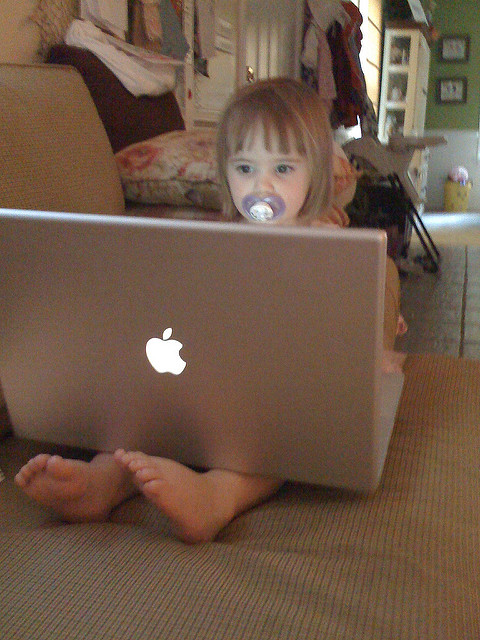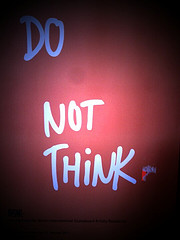|
|
|
Friday, May 25th, 2018

I had the opportunity to attend PoweredUp 2018 hosted by Tampa Bay Tech. It was an opportunity to meet with others in the Tampa Bay, Florida area that are involved in tech, see the latest trends and learn what is working.
One takeaway from the event that I was not aware of. Tampa Bay is the largest tech hub in Florida and one of the fastest growing in the Southeast.
You may think of Florida as white sand beaches, warm weather, and retirees; and you would be right! However certain parts of the state are changing significantly.
I live in St Petersburg, Fl and learned the median age is 38. We have world-class museums, excellent restaurants, and a thriving arts scene. We also have some of the largest public access to the water in all of North America.
Other things else contributing to our growth is a large university system, thriving downtown and lower cost of living than places like San Francisco and New York. Why do I say all of this? I say it because I live here and I did not know that about my own city.
Tech has been primarily centered in large metropolitan areas along the major coastal cities. It makes sense but times are changing. As markets become too constricted and families grow there becomes a need to look outside of the bubble to see what else is out there.
That is where places like Tampa Bay come into play. They offer all the amenities that one needs and a value-add.
There are many offices opening in our city for companies that are Silicon Valley based and venture backed. Those organizations recognize that there is a talent base here that has yet to be tapped.
So this takes me back to the event I attended. Part of the reason for the event is to educate the tech community here that we are not alone.
We are a thriving part of the economy and its only getting better. Senior leaders in companies live and work here; its no longer God’s Waiting Room and we have a bright future.
So if you’re looking for a place to open an office or move, look at the St Petersburg/Tampa area and I’m sure you will feel right at home.
Image credit: Antoine Gady
Posted in Innovation, Personal Growth, Ryan's Journal | No Comments »
Tuesday, April 17th, 2018

Yesterday’s Golden Oldie ended with my sarcastic comment about tech’s distorted and manipulative approach to data a la “gut instinct” and “pattern recognition,” especially when it comes to age and gender equity.
Data only matters when it supports prevailing prejudice.
A couple of years later I linked to articles that clearly showed that age was more a mental state than a physical one, including this one.
Vivek Wadhwa, a Duke University researcher, worked with the Kauffman Foundation in 2009 to explore the anatomy of a successful startup founder. That survey of more than 500 startups in high-growth industries showed that the average founder of a successful company had launched his or her venture at the surprisingly high age of 40. The study also found that people over 55 are almost twice as likely to launch high-growth startups than those aged 20 to 34.
In March, Forbes again focused on the fact that older entrepreneurs are more successful.
…late-career entrepreneurs benefit from the kind of deep domain expertise that younger counterparts lack. The more intimately an entrepreneur knows their particular industry, after all, the better positioned they are for success. A newly published study of hundreds of companies confirmed just this: the startups most likely to succeed have technically savvy founders who know their space inside and out. A classic example is Garmin, maker of the ubiquitous GPS devices. The company was started in 1989 by two career aerospace contractors (in their 40s and 50s, at the time) who pooled their technical know-how to turn military-grade technology into consumer tools. Today the company is worth more than $10 billion.
Even Brian Acton was almost ancient when he founded WhatsApp at 37.
Earlier this month, KG sent along an article from TechCrunch that added more data.
What they found is that the average age of a startup founder is about 41.9 years of age among all startups that hire at least one employee, and among the top 0.1 percent of highest-growth startups, that average age moves up to 45 years old. Those ages are taken from the time of the founding of the company.
The researchers broke down the population of founders along a number of lines, including geography and industry. They found little difference in their results between subcategories, and, in many cases, the subcategory definition actually increased the average age. For instance, industries like oil and gas can have average founder ages as high as 51.4 years old. The researchers wrote that “The only category where the mean ages appear (modestly) below age 40 is when the firm has VC-backing. The youngest category is VC-backed firms in New York, where the mean founder age was 38.7.”
One interesting dynamic in the data is that older entrepreneurs appear correlated with better startup performance. “For example, the 1,700 founders of the fastest growing new ventures (1 in 1,000) in our universe of U.S. firms had an average age of 45.0 (compared to 43.7 for the top 1% and 42.1 for the top 5%),” the researchers wrote.
As you mull these numbers, stay aware that these are companies with actual, and often substantial, revenues, as opposed to valuations based on fundraising and hype.
Image credit: Hawking.org
Posted in Entrepreneurs, Personal Growth | No Comments »
Monday, April 16th, 2018

Poking through 11+ years of posts I find information that’s as useful now as when it was written.
Golden Oldies is a collection of the most relevant and timeless posts during that time.
This post is from 2014. Study after study has proven that more successful founders are in their 40s and 50 than in their 20s. More on the most recent studies this week.
Read other Golden Oldies here.
On one hand you have Jim Goetz, partner at Sequoia Capital, lamenting the lack of enterprise startups and on the other you have Sequoia’s Michael Moritz, “an incredibly enthusiastic fan of very talented twentysomethings starting companies. They have great passion. They don’t have distractions like families and children and other things that get in the way.”
Other things such as experience.
The shallowness of so many of today’s startups makes a great deal of sense if you remember the advice given to every aspiring writer, i.e., write about the things you know; write from your own life and experiences.
Investors give entrepreneurs similar advice, which is probably why you have an abundance of hook-up apps, gossip apps, games and social time-wasters.
And then there is the question of what purpose our economic growth actually serves. The most common advice V.C.s give entrepreneurs is to solve a problem they encounter in their daily lives. Unfortunately, the problems the average 22-year-old male programmer has experienced are all about being an affluent single guy in Northern California.
Monday we looked at the economic dangers from Silicon Valley’s generational gap highlighting the incredible waste of talent engendered.
But the real stupidity in the rush to fund the young is that their success is a myth and not backed up by any kind of hard data.
A 2005 paper by Benjamin Jones of the National Bureau of Economic Research studied Nobel Prize winners in physics, chemistry, medicine, and economics over the past 100 years, as well as the inventors of revolutionary technologies. Jones found that people in their thirties contributed about 40 percent of the innovations, and those in their forties about 30 percent. People over 50 were responsible for 14 percent, the same share as the twentysomethings. Those under the age of 19 were responsible for exactly nothing. One study found that even over the last ten years—the golden age of the prepubescent coder, the youth-obsessed V.C., and the consumer Internet app—the average age of a founder who could claim paternity for a billion-dollar company was a rickety 34.
Everybody in tech focuses on the importance of “data driven” decisions—until the data doesn’t support the decision they want to make.
That’s when they start talking about the importance of “gut instinct” and “unconscious pattern recognition.”
Data only matters when it supports prevailing prejudice.
Flickr image credit: Deryck Hodge
Posted in Golden Oldies, Innovation | No Comments »
Monday, January 8th, 2018
It still surprises me, but poking through 11+ years of posts I find information that’s as useful now as when it was written.
Golden Oldies is a collection of the most relevant and timeless posts during that time.
“Joe” called to wish me a happy 2018 and update me on what he’s doing. It’s been six years since decided to ignore the pressure pushing him to become an entrepreneur.
Since then he’s changed companies twice and was just promoted to director of advanced engineering. He’s having a great time building a team to work on a totally new product. Joe says he’s having a ball.
Joe is proof of two things
- Peer pressure never ends.
- Winners do what they want, not what other people think they should want.
Read other Golden Oldies here.
 “Joe” called me today. He said he was thinking of leaving his company not because he wanted to, but because everyone thought he should. “Joe” called me today. He said he was thinking of leaving his company not because he wanted to, but because everyone thought he should.
He explained that everyone who knew him kept showing him articles and telling him that he was a born entrepreneur and should start his own company.
Joe said he had worked for everything from large companies to startups and as long as he had a good manager and liked the culture he was happy. He worked hard and felt he was fairly compensated.
Joe said he had discussed it with his family and they said he should do what made him happy and they would support that decision.
However, he didn’t want to end up looking like a loser because he didn’t do it.
Boiled down, here is my response.
- Contrary to current media coverage people who work for companies are not losers and entrepreneurs are not the be all and end all of success.
- Few, if any, knowledge workers at any level work 8-hour days, disconnect and go home.
- In the current recession, entrepreneurs are to the 21st Century what consultants were to the recessions of the 20th Century.
- Having entrepreneurial MAP does not mean you want, or have to be, an entrepreneur.
The last point is especially important.
I saw yet another list of 10 traits of entrepreneurs and I had to chuckle. Here it is
- They Are Not Stopped by Fear
- They Know When to Ask for Help
- They Are Persistent
- They Are Passionate About Their Businesses
- They Are Willing to Market and Sell
- They Know Their Numbers
- They’re Disciplined
- They Have Integrity
- They’re Great Communicators
- They Think Long-Term
I chuckled because these are the same traits that all good people have when adjusted for their position and experience.
They are also the traits that the best managers look for when they are hiring. There are, however, many mangers too insecure to appreciate them.
Many years ago I read an article about the guy who invented the tiles used on the Challenger spacecraft to protect it when it reentered the atmosphere.
He wasn’t an entrepreneur, he was a Lockheed engineer. He didn’t get a bonus for his work, it was his job. He didn’t care; he was happy at his company, proud of what he did and liked being part of something larger.
He was a winner.
The lesson here is that great people work for existing companies and great people start companies and both win.
Joe is a winner.
The losers are those who disparage other people’s choice.
Image credit: chokingsun
Posted in Golden Oldies, Motivation, Personal Growth | No Comments »
Monday, November 13th, 2017
It’s amazing to me, but looking back over more than a decade of writing I find posts that still impress, with information that is as useful now as when it was written.
Golden Oldies are a collection of what I consider some of the best posts during that time.
Who’d a thunk it? A world I wrote about 5 years ago that I hoped I wouldn’t live to see has already happened and I’m still here. Bummer.
Read other Golden Oldies here.
 Two stories today made me really happy. Two stories today made me really happy.
Happy that I won’t be around to see the world that the Silicon Valley mentality is working frantically to make happen. (I say ‘mentality’ because startups are all over as is the mindset described.)
It’s a world of instant solutions, from quasi-immortality, postmortem tweets from soon-to-be-launched LivesOn, to futurist Ayesha Khanna’s idea for smart contact lenses that would make homeless people disappear from view—out of sight/out of mind.
Solutionists err by assuming, rather than investigating, the problems they set out to tackle. Given Silicon Valley’s digital hammers, all problems start looking like nails, and all solutions like apps.
And then there is Seesaw, which allows you to “crowdsource absolutely every decision in your life” and practically guarantees siloed, homogenized attitudes over the long-term.
The drive seems to be to avoid thinking in general, let alone any of the less comfortable deep thinking required to mature and develop anything vaguely resembling wisdom.
Leszek Kolakowski argued that, given that we are regularly confronted with equally valid choices where painful ethical reflection is in order, being inconsistent is the only way to avoid becoming a doctrinaire ideologue who sticks to an algorithm. For Kolakowski, absolute consistency is identical to fanaticism.
Or as Emerson said long before the rise of today’s technology, “A foolish Consistency is the hobgoblins of little minds, adored by little statesmen, philosophers, and divines. With consistency, a great soul simply has nothing to do.”
The main problem with so many innovators is that they want to solve problems with an algorithm, which ignores the entire messy human equation; much like medicine desperately wants to believe that one-dose-fits-all.
Nor, in the rush to innovate, do they give much thought as to the longer-term effects of their miracles.
The interactive dialog provided by digital media was hailed as a way to draw millions more into the dialog, which sounds great until you look at the real effect of negative comments on stories.
Comments from some readers, our research shows, can significantly distort what other readers think was reported in the first place. (…) The results were both surprising and disturbing. Uncivil comments not only polarized readers, but they often changed a participant’s interpretation of the news story itself.
Turns out it’s not so much the comment, but the tone that has the greatest effect.
So. No discussion, no disagreement within your little world, no ethical dilemmas, no deep thinking, mental struggle, stretching or growing.
Maybe no innovation.
Is this the world in which you want to live?
Image credit: Igor Schwarzmann
Posted in Golden Oldies, Innovation, Personal Growth | No Comments »
Friday, January 8th, 2016
A Friday series exploring Startups and the people who make them go. Read all If the Shoe Fits posts here
 On one of the last days of 2015 I read a great article about the groupthink that pervades Silicon Valley these days. On one of the last days of 2015 I read a great article about the groupthink that pervades Silicon Valley these days.
It reminded me of how teens of every generation display their rebellion against society through their choice of clothes, while simultaneously making sure they “fit in” with their peers.
This is most easily seen in a subgroup like the goths, whose black clothing and makeup sets them apart from other teens, but within which a rigid dress code prevails.
Unlike the Silicon Valley I knew in the 1980s and 90s, today’s Silicon Valley is far more homogenized and undiversified, with little perspective on the “real” world.
The result is that it’s far less creative and exciting than it once was.
Silicon Valley groupthink is also the force behind what Danielle Morrill, CEO & Cofounder of Mattermark, calls the “tyranny of should.”
But sometimes when I am able to quiet that story down, I catch myself listening because it is just so much easier to have someone else figure out what I should do.
In the first days of this new year I urge you to choose between taking the easy road of groupthink and should or following Sam Altman’s path of most resistance.
“You should ignore what your peers are doing or what your peers or parents think is cool. (…) And that’s the hardest part. We’re all so much more susceptible to that than we think.”
Yes, another ‘should’, but not all ‘shoulds’ are created equal.
As always, it’s your choice.
That’s both life’s greatest joy and its greatest fear.
Image credit: HikingArtist
Posted in If the Shoe Fits | No Comments »
Monday, October 5th, 2015

Do you ever wonder why so many consumer startups are similar?
Not in terms of the products or services, but the similarity of what each accomplishes.
Each is aimed at providing the wherewithal to accomplish a basic function of living.
From locomotion to meals to dates or just sex; from cleaning to shopping to errands to child/parent/pet care.
They are developed for a generation that is used to having everything done for them.
And then adopted by generations used to doing things for themselves.
No, that is inaccurate.
They are adopted by those of whatever age who can afford to pay.
Posted in Innovation | No Comments »
Friday, March 6th, 2015
A Friday series exploring Startups and the people who make them go. Read all If the Shoe Fits posts here
 Have you ever been taken aback by the dichotomy between a company’s excellent product and its amateurish website or product sheets? Have you ever been taken aback by the dichotomy between a company’s excellent product and its amateurish website or product sheets?
If you have, you are face-to-fact with an immature company.
And while important for consumer sales, M&S maturity is absolutely critical when selling to business — no matter the size of the enterprise.
This immaturity has nothing to do with years in business and everything to do with an immature business process with regards to sales and marketing.
If a potential customer meets something that’s immature, i.e., incompetent, in M&S, they will jump to the conclusion that the company is also incompetent in other areas.
That’s why look & feel are so important — we Americans, unlike most other countries, have grown up in a society where marketing is central, so in many ways looks are more important than substance.
Young companies are often immature; they hire sales people, but turn a blind eye to the need for doing the product marketing work first.
The shrug off lead generation/creation, lead nurturing, sales process, sales collateral that fit the process, key selling points against competitors, target user profile, target influencer profile, etc., and, worst of all, customer service.
These are the real underpinnings for success.
A lot to cover; a lot to do, but the payoff is significant.
After all, you don’t want your target customers to dismiss you because you look immature, do you?
Posted in If the Shoe Fits, Marketing, Strategy | No Comments »
Friday, December 19th, 2014
A Friday series exploring Startups and the people who make them go. Read all If the Shoe Fits posts here
 What is failure? What is failure?
Is it having a startup/project/marriage go left instead of right?
How many times can a person fail?
Once/twice/several/more?
Failure in the startup world has essentially become a non-event, since that outcome is more likely than success.
According to research by Shikhar Ghosh, a senior lecturer in the entrepreneurial management unit at Harvard Business School, 30 to 40 percent of venture-backed start-ups blow through most or all of their investors’ money, and 70 to 80 percent do not deliver their projected return on investment.
However, I believe that you can only fail once.
That’s because the only failure I recognize is that of not trying again.
Also known as quitting.

Image credit: HikingArtist
Image credit: BK
Posted in If the Shoe Fits, Personal Growth | No Comments »
Friday, September 26th, 2014
A Friday series exploring Startups and the people who make them go. Read all If the Shoe Fits posts here
 For many founders speed and as-instant-as-possible gratification are their watchwords. For many founders speed and as-instant-as-possible gratification are their watchwords.
They aim to be a rocket and when it doesn’t happen quickly they are on to the next idea.
Now look at the father and two sons who founded and built Qualtrics.
Two years ago Qualtrics had bootstrapped its way to $50 million in revenue, 200 employees, 3,800 customers and a $500 million acquisition offer.
CEO Ryan Smith is all of 33, which means he was just 23 when the company started just after the dot com crash (dad created the product and his older brother powers the tech.)
He turned the buyout down and took investment instead.
Two years later they have over $100 million in sales, 550 employees, 6,000 customers, a billion dollar valuation and $150 million in a series B round.
It’s said the best time to start a company is during tough times when money is tight.
Qualtrics may not have been built fast, but it was certainly built to last.
Image credit: HikingArtist
Posted in If the Shoe Fits | No Comments »
|
 Subscribe to
Subscribe to
MAPping Company Success
About Miki 
Clarify your exec summary, website, etc.
Have a quick question or just want to chat? Feel free to write or call me at 360.335.8054
The 12 Ingredients of a Fillable Req
CheatSheet for InterviewERS
CheatSheet for InterviewEEs™
Give your mind a rest. Here are 4 quick ways to get rid of kinks, break a logjam or juice your creativity!
Creative mousing
Bubblewrap!
Animal innovation
Brain teaser
The latest disaster is here at home; donate to the East Coast recovery efforts now!
Text REDCROSS to 90999 to make a $10 donation or call 00.733.2767. $10 really really does make a difference and you'll never miss it.
And always donate what you can whenever you can
The following accept cash and in-kind donations: Doctors Without Borders, UNICEF, Red Cross, World Food Program, Save the Children
*/
?>About Miki
About KG
Clarify your exec summary, website, marketing collateral, etc.
Have a question or just want to chat @ no cost? Feel free to write
Download useful assistance now.
Entrepreneurs face difficulties that are hard for most people to imagine, let alone understand. You can find anonymous help and connections that do understand at 7 cups of tea.
Crises never end.
$10 really does make a difference and you’ll never miss it,
while $10 a month has exponential power.
Always donate what you can whenever you can.
The following accept cash and in-kind donations:
|







 “Joe” called me today. He said he was thinking of leaving his company not because he wanted to, but because everyone thought he should.
“Joe” called me today. He said he was thinking of leaving his company not because he wanted to, but because everyone thought he should. Two stories today made me really happy.
Two stories today made me really happy. On one of the last days of 2015 I read a great article about the
On one of the last days of 2015 I read a great article about the 
 Have you ever been taken aback by the dichotomy between a company’s excellent product and its amateurish website or product sheets?
Have you ever been taken aback by the dichotomy between a company’s excellent product and its amateurish website or product sheets?

